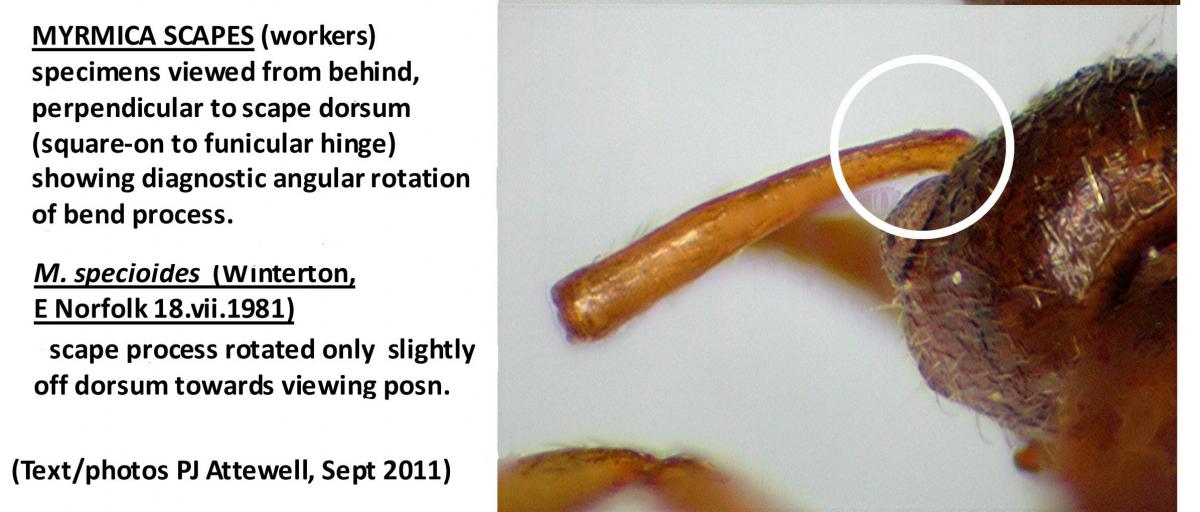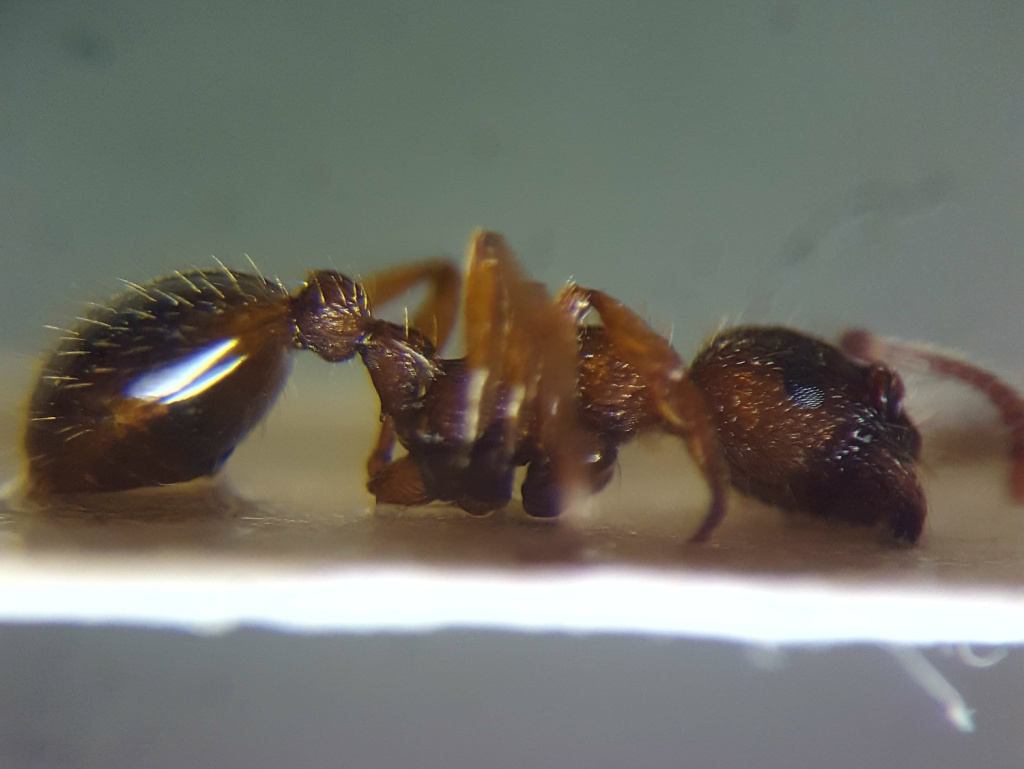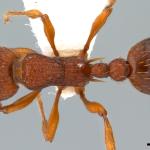Myrmica specioides is a red ant similar in appearance to others of its genus. It has a scape sharply angled at the base and is most likely to be confused with M. scabrinodis. It can be distinguished in the females and workers by the shape of its petiole and the angle of its scape (see Attewell 2006) and in the males which have a shorter scape than M. scabrinodis. There is some controversy over the name of this species with some authors using the name M. bessarabica Nasonov.
Modern records are predominantly from coastal sites: East Sussex, Kent, Essex, East Suffolk and East Norfolk.
Western and central Europe, northern part of the Balkan peninsula (Czechowski et al., 2002).
Listed as Rare (RDB3) in both Shirt (1987) and Falk (1991).

Petiole:
Upper surface of petiole is gently curved into hind face. Post-petiole is almost spherical.

Photo by Richard Moyse.
Warm, dry, sunny situations with sparse vegetation. Coastal south facing slopes and sand dunes are favoured. Has been found in suitable post industrial sites.
Alates have been recorded from late July to Early September.
Nest occur in coastal sand and gravel banks and have a simple entrance hole. Colonies can comprise 100 to 2,500 workers and one or several queens.
The most aggressive of the Myrmicas, they prey on workers and brood of weaker Lasius species especially Lasius flavus (Fabricius). They will sting readily.
No data available.
2011


